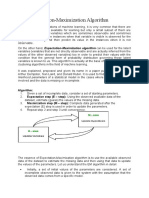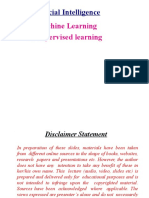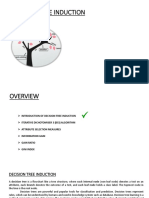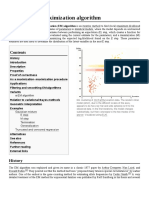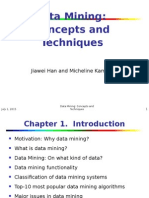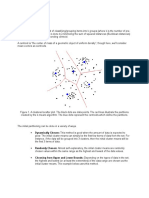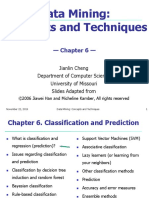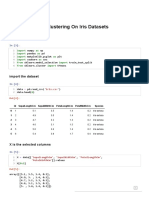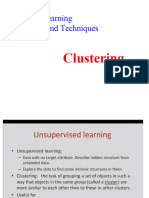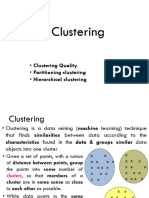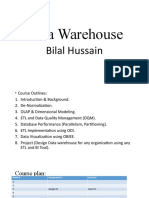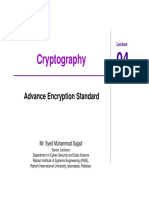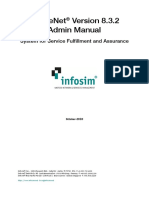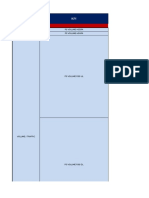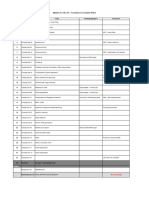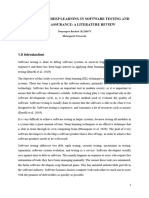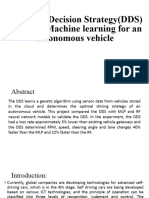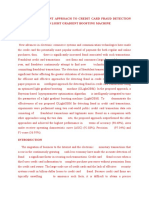0% found this document useful (0 votes)
360 views32 pagesK-Means Clustering Guide
Clustering is the process of grouping unlabeled data points into clusters so that objects within the same cluster are more similar to each other than objects in different clusters. K-means clustering is a commonly used partitioning clustering algorithm that groups data points into k number of clusters defined by the user. It works by assigning each data point to the nearest cluster centroid, recalculating the centroid positions, and repeating this process until the centroids are stable or the maximum number of iterations is reached.
Uploaded by
Daneil RadcliffeCopyright
© © All Rights Reserved
We take content rights seriously. If you suspect this is your content, claim it here.
Available Formats
Download as PPT, PDF, TXT or read online on Scribd
0% found this document useful (0 votes)
360 views32 pagesK-Means Clustering Guide
Clustering is the process of grouping unlabeled data points into clusters so that objects within the same cluster are more similar to each other than objects in different clusters. K-means clustering is a commonly used partitioning clustering algorithm that groups data points into k number of clusters defined by the user. It works by assigning each data point to the nearest cluster centroid, recalculating the centroid positions, and repeating this process until the centroids are stable or the maximum number of iterations is reached.
Uploaded by
Daneil RadcliffeCopyright
© © All Rights Reserved
We take content rights seriously. If you suspect this is your content, claim it here.
Available Formats
Download as PPT, PDF, TXT or read online on Scribd
/ 32









